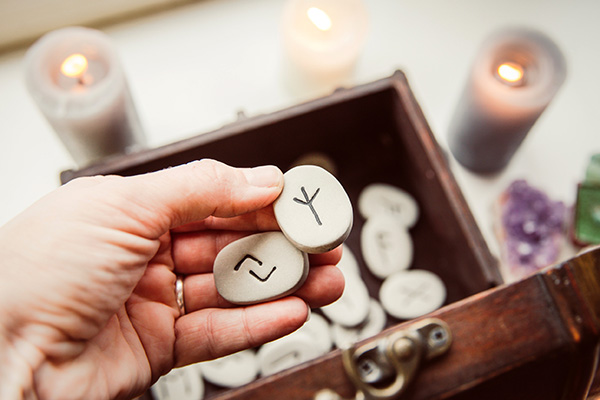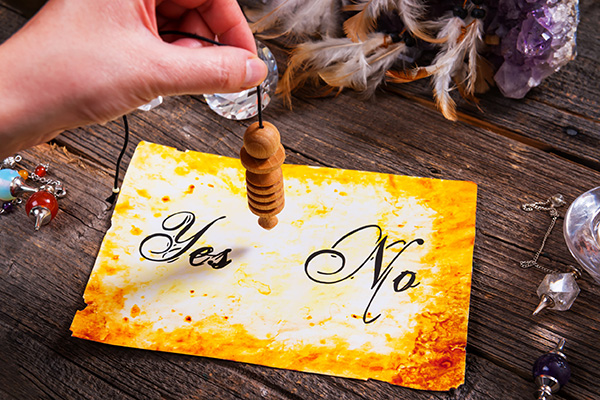How Your Spirit Guides Can Offer Trustworthy Direction
 “My guides must really dislike me! Why would they guide me to experiences that inflict so much hurt?” a client lamented during a session. “And where is my guardian angel when I truly need assistance?”
“My guides must really dislike me! Why would they guide me to experiences that inflict so much hurt?” a client lamented during a session. “And where is my guardian angel when I truly need assistance?”
This was not the first instance I encountered such expressions from a troubled client. Feelings of disappointment and frustration like this are quite common, as they touch upon the core of spiritual exploration.
This concern is certainly understandable. If angels, guides, and ancestors are meant to provide guidance, support, and protection, then why do they sometimes lead us towards pain, sadness, and even trauma? Are they truly looking out for us, or are they causing distress for reasons unknown?
I admit that I too have pondered these questions at one point in my life.
Yet after years of serving as a professional psychic and energy healer, along with my personal spiritual growth journey, I have reached a comforting realization. Our spirit helpers always act from a place of divine wisdom, unconditional love, and compassionate assistance.
So, you may wonder, why do adverse events sometimes happen to good individuals? The answer is quite straightforward. Any deviation from our highest good does not stem from spirit making a mistake, overlooking something, or misrepresenting anything.
When we face difficulties, it is generally a result of our own actions or something we co-created with others. Regardless of the cause, we are always the common factor.
Here are a few examples of self-inflicted misfortunes that I frequently encounter in my practice, along with how they contrast with genuine spirit guidance and divine intervention.
We are graced with guidance, and it lies within our power to seek ways to both express and heed this wisdom. The choice is ours ~ Susan Barbara Apollon
Ego Interference
<pOften, when we perceive events as divine guidance, we’re actually heeding the wounded aspects of our ego. The ego mind often recreates familiar patterns of suffering because it lacks other knowledge.
While spirit may sometimes gently usher us beyond our comfort zones into uncharted territory that promotes growth and soul expansion, our spirit allies would never compel us onto a damaging path. They would not drive us towards trauma, belittlement, or emotional breakdown.
There exists a crucial distinction between a nurturing parental nudge toward our highest good and cruelty disguised as “spiritual guidance.” The former feels grounded, compassionate, and optimistic, even amidst discomfort, while the latter undermines your sense of security, plunging you into fear or shame. Identifying this difference is the first step to transcending your ego and reclaiming your intuitive discernment.
Lack Of Listening
Spirit communicates softly and indirectly. We often receive guidance, but our perception is clouded by pain, anger, grief, or internal noise, which causes us to pay little attention.
If you find yourself in this state, take moments each day to calmly pause and turn your focus inward. Recognize the voice of the ego that drowns out your inner wisdom, be it self-blame, a desire for comfort that no longer serves you, or impatience stemming from intense yearning.
You may also create a sacred pause in your day. Close your eyes, breathe deeply, and ask, “Show me what I need to see.” Simply remain open. The guidance might arrive as a gentle whisper afterward or as signs throughout your day.
Alternatively, consider inviting your spirit team to connect with you during your dreams. When your conscious mind rests and is free from suffering, silence allows space for spirit. Your dreams may contain symbols, messages, healing energy, and even direct communication from your spirit team.
Sometimes when we pray for guidance, we’re directed in unpredictable ways. We might seek a grand answer and receive the intuition to tidy up our bedroom. It can appear so modest and trivial that you wouldn’t necessarily consider it as spiritual guidance ~ Julia Cameron
Divine Intervention
At times, what feels like rejection, misfortune, or hardship is actually a matter of saving grace, gently guiding you away from something that isn’t genuinely yours and directing you towards something that truly is.
Perhaps you’ve faced significant loss when a relationship ended or felt overwhelmed when a door suddenly closed. These conclusions may be painful in the moment. Yet, upon reflection, people frequently realize that these were the exact prompts required to prevent deeper harm or deviation from their authentic soul path.
Sometimes, what we interpret as rejection or disappointment is simply divine redirection. The universe may softly close a door or conclude a relationship, not to penalize us but to safeguard us. What we perceive as an agonizing detour is often a protective measure from something that doesn’t resonate with our highest good.
Our guides don’t aim to protect us from all discomfort in life, but they do accompany us through it, providing clarity and grace midst the struggle. Their role is not to prevent us from falling but to assist us in rising stronger and wiser when we do. What may feel like a setback could very well be divine protection from something significant, yet unseen.
Soul Purpose
We enter this existence carrying soul contracts. Some are made with others, and some with ourselves. A portion of these contracts involves working through unresolved karma and transforming suffering for the greater good.
In this context, pain is not punishment. It’s an assignment. We are meant to face certain challenges and tribulations, so we can comprehend it, heal it, and then serve as beacons for others embarking on similar journeys.
For instance, before you incarnated into this life, you may have consented to experience heartbreak so that you can aid others on their healing journey, or confront betrayal to teach forgiveness, or experience abandonment to embody authentic self-love.
In these karmic scenarios, your role isn’t to evade the pain. Your task is to heal it and illuminate the way for others. This is how we “pay it forward” and cleanse old energies at the collective level.
Mankind claims good fortune as his right, but when adversity strikes, he believes it was aimed at him, done to him, a curse, a punishment from his deity for some error, as though his god were a petty shopkeeper, tallying up the day’s receipts ~ Sheri S. Tepper
Free Will Learning
All that has been mentioned assumes your full engagement based on your free will. Spirit can show you the options, but only you can decide which one to pursue. Occasionally we might explore a “wrong” door, consciously or unconsciously, as our soul experiments with independence, self-determination, and self-expression.
Perhaps you disregarded the inner voice that urged you away from a toxic friendship, leading to hurt. Or you may have pursued a business idea that everyone warned you against, and it ultimately fell apart. These experiences aren’t proof of failed spiritual guidance. They represent your soul nurturing autonomous decisions and life lessons that you welcomed into your reality.
Afterward, your guides will remain with you to help you gather the fragments, heal, celebrate your resilience, and encourage you to learn from your experiences. Your guides and supporters are neither distant marionettists nor silent spectators. They are our allies, compassionately walking alongside us through both victories and trials.
Our journey is not linear. It is a spiral, continuously moving, expanding, and revisiting past wounds with heightened awareness. The universe sets the cadence, but we carry out the dance. Occasionally we trip, but that’s not reflective of spirit failing. More often, that stumble forms part of our soul plan – a hidden workshop for healing old wounds, activating compassion, or awakening a dormant gift.
Whenever you feel misguided, unloved, or forsaken, remember this: in our present circumstance, we only grasp a small fraction of the broader map of our life pathway. Remaining open to each person, opportunity, and experience that presents itself, and discerning what we can learn, evolve, and contribute, nurtures an attitude of acceptance and gratitude for every moment of existence and for every element of spirit guidance.
This singular step will unlock a broader reality and foster a new relationship with your guides. You will begin to perceive life from their viewpoint—one that cherishes each moment while recognizing every experience and individual as divinely perfect.
|
Megan possesses innate gifts, experiencing dreams and premonitions from a tender age. She has received 30 years of daily mentorship from Guides, Archangels, Ascended Masters, and the Ashtar Command. Since 1993, Megan has provided honest and compassionate readings and healings, beginning with friends and family, then shifting to a professional practice in 2006. She holds certifications in various psychic and healing techniques, including Reiki, Angel Work, and specializes in relationship readings, offering detailed insights on relationship longevity, partner honesty, and future intentions. Megan has successfully read for clients globally and takes pride in her client loyalty; many have worked with her for years, some since the inception of her practice. To experience a transformative psychic reading with Megan, contact her today at PsychicAccess.com |
Spirit guides are otherworldly beings assigned to individuals to assist in their life journey. These guides offer valuable support and direction during challenging times, providing wisdom and insight that help individuals navigate difficulties and make crucial decisions.
One primary method through which spirit guides provide reliable guidance is via intuition. Intuition serves as a robust tool allowing us to connect with our inner wisdom, enabling decisions based on our instincts. Spirit guides can enhance our intuition by sending subtle messages and signs that aid in making the right choices.
Additionally, spirit guides can impart guidance through dreams. Dreams represent a potent medium in which our subconscious communicates, and spirit guides can utilize this channel to relay important insights and messages. Attending to your dreams and maintaining a dream journal can aid in deciphering the messages your spirit guides aim to convey.
Another means by which spirit guides offer reliable guidance is through synchronicities. Synchronicities are significant coincidences that manifest in our lives, often perceived as signs from the universe indicating we’re on the correct path. Spirit guides can orchestrate these synchronicities to assist us in making vital decisions and moving through life with grace.
To connect with your spirit guides and receive their valuable guidance, it is crucial to cultivate a robust spiritual practice. This can encompass meditation, prayer, and mindfulness activities that help you quiet your mind and prepare to receive messages from your guides. Trust in your spirit guides’ counsel and remain receptive to their messages to help make better decisions and lead a more fulfilling life.
In conclusion, spirit guides provide invaluable support and guidance during times of need. By nurturing a solid spiritual practice and remaining open to receiving insights from your guides, you can access their wisdom to navigate through life effortlessly. Trust in your spirit guides’ direction and allow them to guide you along the right path. Continue reading


















